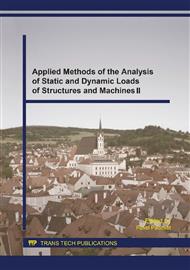p.211
p.215
p.219
p.223
p.227
p.231
p.235
p.239
p.243
Investigation of Bending Capacity of Concrete Elements Strengthened by Textile Reinforced Concrete
Abstract:
Presented contribution deals with using textile reinforced concrete containing newly invented high strength cement matrix for strengthening concrete structures. The issue of old concrete ́s surface interaction with newly applied slim layer of textile reinforced concrete is investigated and verified by bending test. Water to binder ration under 0.3, maximum size of used silica sand 1.2 mm, and compressive strength over 100 MPa characterize used fine grain cement matrix. Over 12 months old beams with dimension 100 x 100 x 400 mm made from ordinary concrete were used for strengthening during performed experimental program. Strengthening took place on bending side. Different number (1, 3 and 5) of textile fabrics made from alkali-resistant glass (surface density 275 g/m2) was applied into slim layer of cement composite. Increasing number of used fabrics leads to different failure mode due shearing force action.
Info:
Periodical:
Pages:
227-230
Citation:
Online since:
February 2016
Authors:
Price:
Сopyright:
© 2016 Trans Tech Publications Ltd. All Rights Reserved
Share:
Citation:


